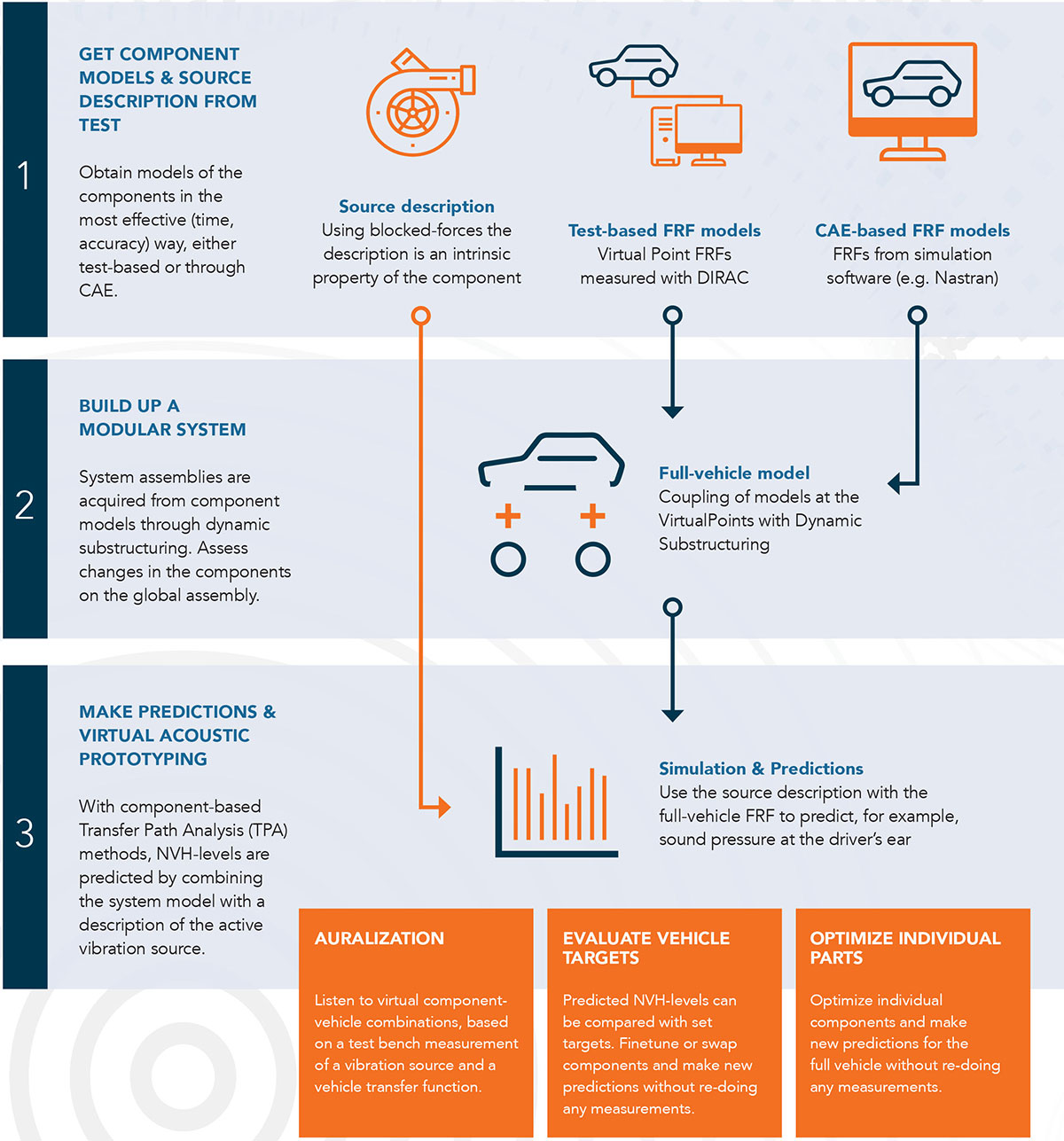VIBES Methodology
A new game plan for sound & vibration engineering
Nowadays, the demand of consumers and professionals drive the design complexity of cars, airplanes, ships and other mechanical equipment. An important aspect of product design is sound and vibration engineering. Because of its many technical challenges, this aspect is usually performed in the latest stage of product development. This leads to iterative design cycles, involving many physical prototypes, which can become costly and time consuming. In other words: product managers and engineers need a new game plan!
WHY USE A NEW METHOD?
Improving the design of sound & vibrations
The VIBES Methodology allows engineers to couple measured FRFs with simulated FRFs. Engineers are able to use powerful hybrid modeling and simulation strategies with significant improvement in quality of sound and vibration prediction of complex products. Late-phase sound and vibration troubleshooting is avoided, fewer iterative design cycles are needed, saving time and resources. All in all making reliable full-vehicle models available earlier in the development process. VIBES.technology is the expert in the modular characterization of sound & vibration for automotive and high-tech industries. We are leading experts in:
- Test-based modeling – obtaining FRF models from test, compatible with FE models
- Source characterization – blocked force descriptions for active components
- Dynamic substructuring – combining multiple component FRF models to build up a system
The VIBES Methodology combines all technologies mentioned above and with it, VIBES’ engineers are improving the reliability, time-efficiency and cost-effectiveness of sound & vibration R&D.
A modular way of working
Using the VIBES Methodology, a modular way of working, engineers obtain modular descriptions of individual components, with Blocked Forces being the independent quantities describing the active vibrations of the source.
- Using Frequency Based Substructuring, component descriptions are combined to predict the behavior of a full vehicle in a modular way.
- To further reduce costs, engineers can even combine measured and simulated component models, for example using the Virtual Point method.
- This has the added benefit of giving insight in the model quality and reliability, which is implemented in the DIRAC software.
We proved the success of the VIBES Methodology in projects for several major players in industry and we are now leading experts in applying component-based TPA and Blocked Force technology.
Right now, the industry is also picking up on these trends. With smart sensor data fusion (which is done real-time in DIRAC) typical drawbacks as directional errors in impact hammer testing or the application of forces at connection points are efficiently dealt with – with the added benefit that the engineer gets real-time insight in the measurement quality too.
We are excited to see that our enthusiasm for the continuous development and implementation of modern TPA methods is shared and appreciated across the industry. VIBES has built a professional team of dedicated experts and researchers, working together with leading partners in the industry to build the right tools and knowledge that help our clients win in competitive markets.
Virtual Point
A common interface to connect test-based models with FE models and create high-quality FRFs.
Transfer Path Analysis
With TPA, engineers evaluate the noise from various sources (e.g. road or engine noise), which propagates to the receiver (the driver or passengers) through various transfer paths.
Learn more
VIBES Academy
The VIBES Academy contains info about our methodology and product manuals of DIRAC, SOURCE and the VIBES Toolbox for MATLAB.
Tailored Software Applications
We tailor-make our software applications to fit your demands. A sustainable improvement of your engineering processes is what we aim for.
Contact Us
Looking forward to helping you tackle your challenges! More info regarding our services or VIBES.technology, please get in touch.

